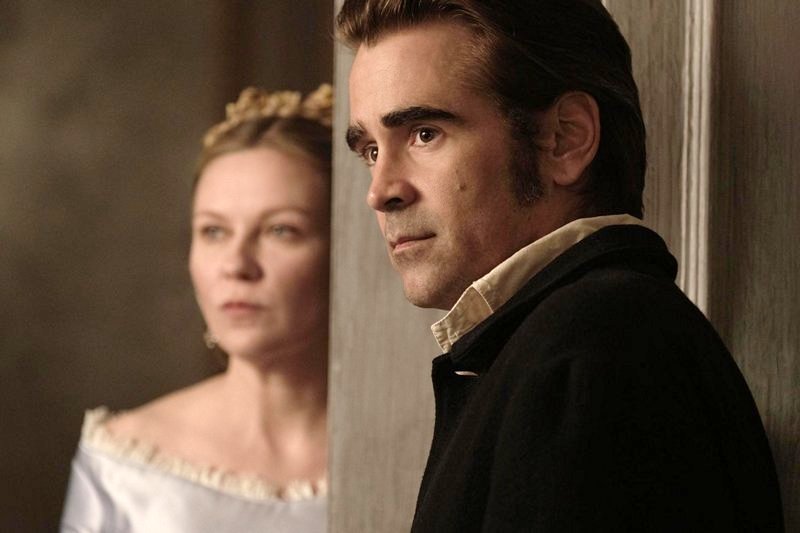The Beguiled
 for some sexuality.
for some sexuality.
Reviewed by: Jonathan Rodriguez
CONTRIBUTOR
| Moral Rating: | Offensive |
| Moviemaking Quality: |
|
| Primary Audience: | Adults |
| Genre: | Western Drama Adaptation Remake |
| Length: | 1 hr. 33 min. |
| Year of Release: | 2017 |
| USA Release: |
June 23, 2017 (limited) June 30, 2017 (wide) DVD: October 10, 2017 |
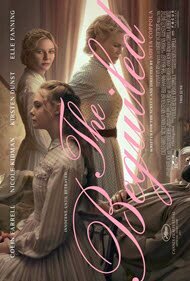

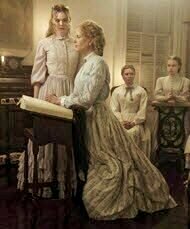

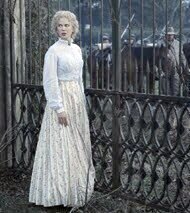
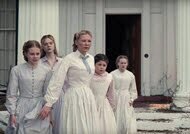
women trying to survive a war
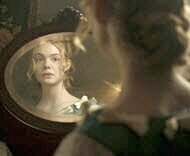
women with lonely and vulnerable hearts

seducers and deceivers

envy and rivalries between women over men
scheming

SEXUAL LUST—What does the Bible say about it? Answer
“Flee from sexual immorality. Every other sin a person commits is outside the body, but the sexually immoral person sins against his own body.” —1 Corinthians 6:18 ESV
“…flee from youthful lusts and pursue righteousness, faith, love and peace, with those who call on the Lord from a pure heart.” —2 Timothy 2:22
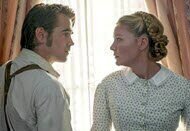
PURITY—Should I save sex for marriage? Answer
CONSEQUENCES—What are the consequences of sexual immorality? Answer
“Hell hath no fury like a woman [or group of women] scorned”
possible deliberate cruelty
| Featuring |
|---|
|
Colin Farrell … John McBurney Nicole Kidman … Martha Farnsworth Kirsten Dunst … Edwina Dabney Elle Fanning … Alicia Oona Laurence … Amy Angourie Rice … Jane Addison Riecke … Marie Emma Howard … Emily Wayne Pére … Captain Matt Story … Confederate Soldier Joel Albin … Calvary Soldier Eric Ian … Confederate Soldier (uncredited) |
| Director |
| Sofia Coppola — “Somewhere” (2010), “Lost in Translation” (2003), “The Virgin Suicides” (1999) |
| Producer |
|
Roman Coppola Sofia Coppola See all » |
| Distributor |
“Innocent, until betrayed.”
be-guile
past tense: beguiled
meaning: Charm or enchant (someone), sometimes in a deceptive way
A wounded Union soldier is discovered in the woods outside of Martha Farnsworth’s Seminary for Young Ladies, a Confederate-run Virginia school for girls, at the start of Sofia Coppola’s new film “The Beguiled.” One of the students discovers the soldier (Colin Farrell) and helps him back to the school, where Miss Martha (Nicole Kidman) quiets the other girls’ fears of having “the enemy” on their grounds, and instead decides that the Christian thing to do would be to help the soldier heal from his wounds before turning him over to the Confederate troops.
There are only a handful of girls left at the school, and those that remain vary in age from elementary to college-aged. Their behavior makes it apparent that the girls haven’t seen a man in quite some time, and each reacts in various ways, all meant to impress their new “guest.” The soldier plays a big brother to one, a best friend to another, a heartthrob, a love-sick sap, and a tortured soul to the rest. Each succumbs to his charms. Or, perhaps, as the title implies, he is succumbing to theirs. The role of Beguiler shifts between characters, as each seeks to gain control over the current object of their affection, and over anyone who might get in their way.
If there is one thing you can count on from a Sofia Coppola film, it is that it will be gorgeously shot and masterfully directed, and “The Beguiled” is no exception. In fact, it might be her best looking film to date (although, not her best film. That is, in my opinion, and will always be, “The Virgin Suicides”—one of the best movies of the 2000s). You can also count on an undercurrent of emotion—often lust—that permeates every shot, every exchange.
One gets the feeling watching “The Beguiled” that so much of that sexual tension plays out in the space between the characters—in their gazes, their movements, their silence—but, with the exception of one scene near the end, it never actually manifests itself in sexual action. The characters are, for the most part, restrained, yet we can read their faces and their minds plainly. It’s interesting watching this play out in the group-home dynamic, where classmates and friends suddenly strive to be the center of attention, to one-up the other girls. My favorite scene (and the one funny scene) takes place around the dinner table, where each girl tries to outdo the other in impressing their guest. Even Miss Martha falls victim to this, perhaps because the soldier is a man, or perhaps because he’s another adult she can sit and drink brandy with and not have to be Miss Martha.
The movie is cast with very talented and experienced performers, but this movie belongs to Nicole Kidman. Between this film, last year’s Best Picture nominee “Lion,” and HBO’s miniseries “Big Little Lies,” the last 12 or so months have completely belonged to Kidman. She’s consistently been at the top of her game, and she doesn’t disappoint here. The rest of the cast, comparatively, left me less impressed, although none of the performances were in any way bad. Colin Farrell (who delivered one of the most underrated performances in recent memory in “Saving Mr. Banks”) feels slightly miscast in the role of the wounded soldier. Or perhaps his soldier wasn’t given enough to work with. There is no denying Farrell’s ability to charm on screen, but his character isn’t given enough time to effect the believable charm needed to make this character work.
For an R-rated movie, the content in “The Beguiled” is rather tame. There is some blood from the soldier’s initial wound and a subsequent re-injury, but nothing grotesque. There is very little objectionable language—only one GD that I heard near the end. But the film does have a heavy sexual energy to it, even though the girls aren’t really ever dressed immodestly, and no one is every excessively flirtatious. There is one sex scene near the end that, while not containing any nudity, does get briefly intense. The R-rating here “for sexuality” seems less warranted than usual, and seemed, to me, comparable to many PG-13 movies. However, it is very doubtful children or teenagers will be interested in this movie.
“The Beguiled” is based on the 1966 Thomas Cullinan novel of the same name. That novel was also the inspiration for the 1971 Clint Eastwood-acted movie “The Beguiled,” although Sofia Coppola has made it clear she hasn’t remade that film, but has simply adapted the original literary source material. The Clint Eastwood version was recently available on-demand, so I decided to give it a watch to familiarize myself with the story, before seeing Coppola’s version. Truthfully, I wasn’t even aware there had been a Clint Eastwood version until stumbling onto it, but I’m glad I was able to see it beforehand. Eastwood’s clocks in at over two hours, while Coppola’s barely scratches the hour-and-a-half mark.
In a time when it seems like every movie (even the mindless summer action movie) is consistently topping the two-and-a-half-hour mark, it’s curious that Coppola would create such a lean gothic drama that relies so heavily on atmosphere and yet not take as much time to build up that atmosphere through character development. Eastwood’s film takes the time to let the soldier get to know and develop relationships with each of the women in the film, and their reactions and paranoia as the film progresses are more believable, because they’ve been earned over time.
When Eastwood tells one of the women that he is in love with her, it doesn’t seem awkward or forced. We understand what he is doing and why he is doing it. When Colin Farrell’s character says it, people in the audience actually chuckled in disbelief, despite not likely having seen the Eastwood film, because nothing had really given us any indication that the two characters had developed any kind of relationship beyond making eyes at each other once or twice. Sofia Coppola’s film has a lot of well-earned unspoken emotion lurking under the surface, but the outwardly-expressed emotions never really felt earned, and therefore felt forced.
When the final credits rolled, I could hear the audience (which was quite large) collectively either laugh or groan, and neither were for good reasons. I even heard one woman loudly say “Well, that’s a NO for this movie.” The three women seated next to me just shook their heads. It’s getting pretty decent reviews from secular critics though, and perhaps if I hadn’t seen the 1971 film first, I would have appreciated this one more going into it blindly. But, in all honestly, the Clint Eastwood film isn’t a film I’d really recommend to anyone, and I still think it’s better than this new version.
I may have been charmed by the look of this film, but I was not beguiled by the total package.
Violence: Moderate / Profanity: Mild—G*d d*mn, J*sus, Oh J*sus, Swear to G*d, b*tches / Sex/Nudity: Moderate to heavy—passionate sex scene (mostly clothed), male and female in bed making out, sponge bath (not graphic), kisses, girls study “The Art of Castration”
See list of Relevant Issues—questions-and-answers.


PLEASE share your observations and insights to be posted here.
